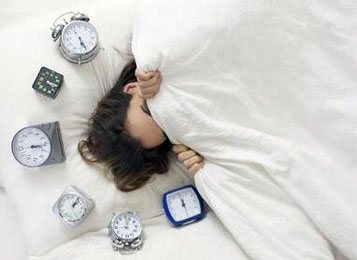
Sleep disorders can manifest as an inability to sleep (insomnia), daytime sleepiness, abnormal movements or behavior during sleep, or an inability to sleep at the appropriate time. Insomnia, defined as a persistent difficulty falling or staying asleep that impairs daytime function, is the most common sleep complaint. Insomnia can be caused by a variety of conditions, and can take many forms.
People with daytime sleepiness are fatigued, have a tendency to fall asleep in inappropriate places at inappropriate times, and have poor concentration, among other problems. Some people have abnormal behaviors during sleep that may manifest as leg jerking or other body movements. Common causes of this disorder include restless leg movement disorder, periodic limb movement disorder, or seizures. Other disorders, related to sleep deprivation, result in sleepiness and an inability to fall asleep at appropriate times.
There are four different types of major sleep disorders: dyssomnias, parasomnias, those caused by medical, neurological, or psychiatric problems, and proposed sleep disorders, a category for which little information is currently available Table 01. Dyssomnias produce insomnia or excessive sleepiness as a result of either disturbed nighttime sleep or impaired wakefulness. The dyssomnias are a mix of disorders originating in different body systems, and are further divided into intrinsic, extrinsic, and circadian–rhythm sleep disorders. Intrinsic disorders such as narcolepsy, obstructive sleep apnea syndrome (OSAS), and restless legs syndrome (RLS) occur as a result of internal causes. Extrinsic dis-orders typically occur as a result of environmental factors. Circadian–rhythm disorders are a result of sleep–wake cycle disruption.